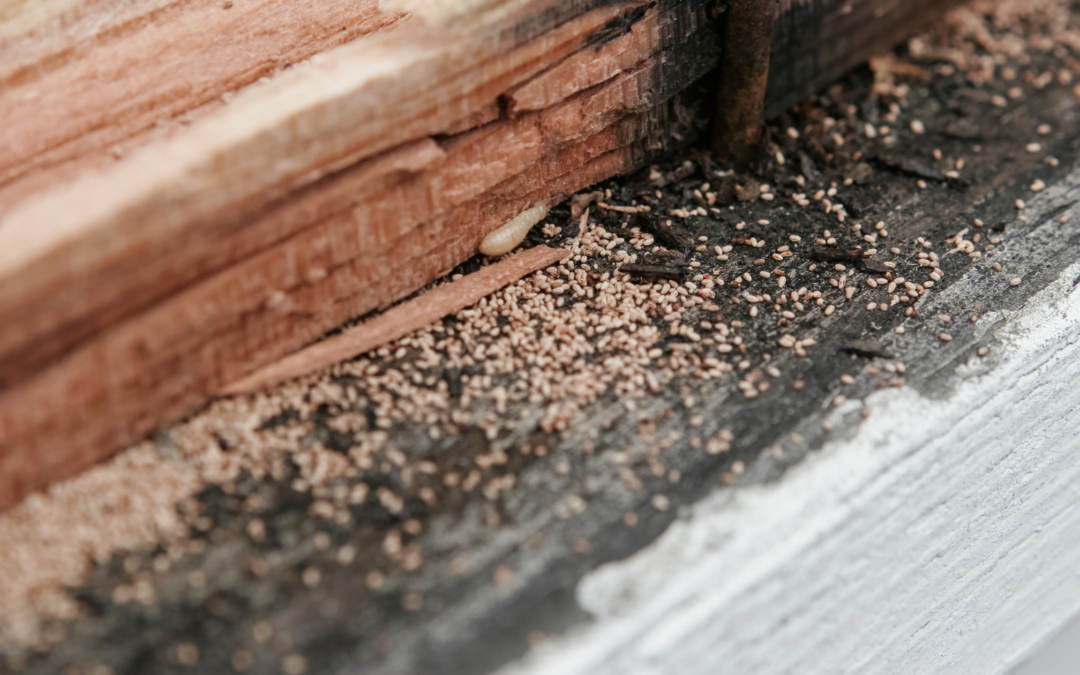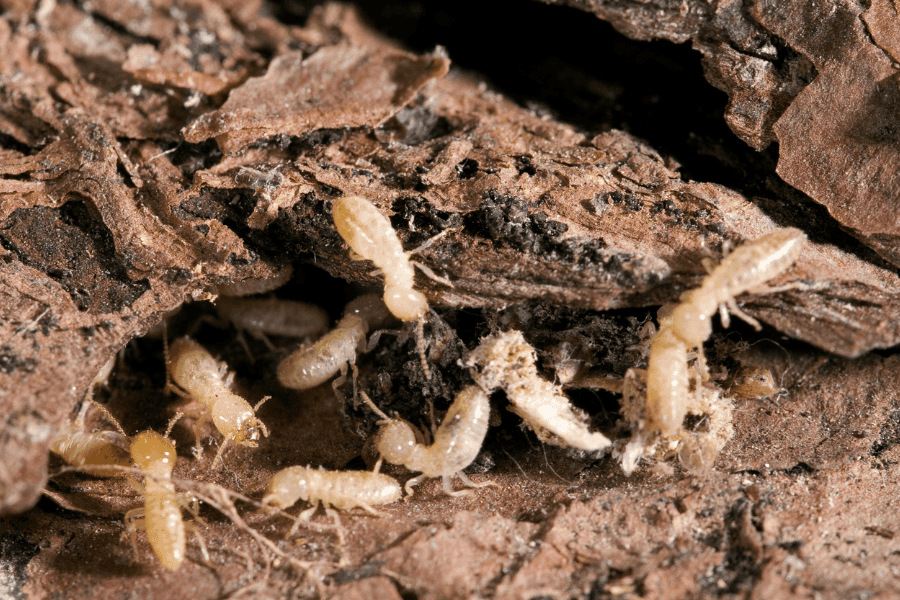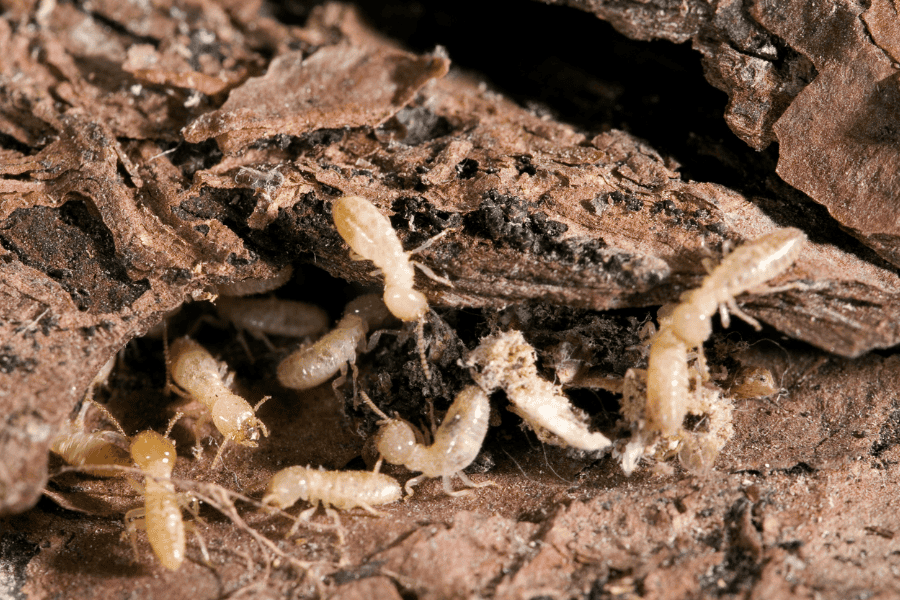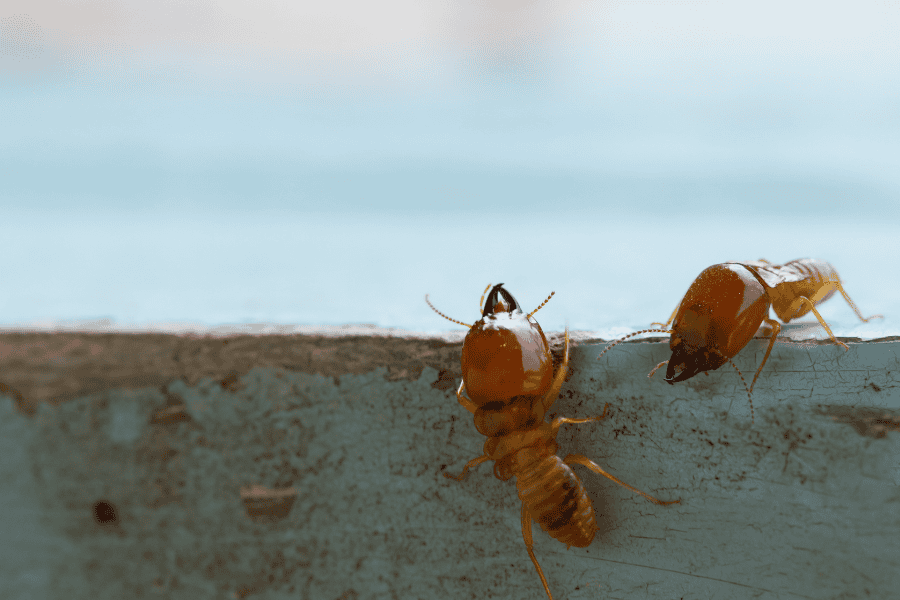
Dec 20, 2024 | Termite Control
Termites are among the most destructive pests that can invade your home, often causing extensive damage before being noticed. Regular termite inspections by professionals are crucial to protect your property. If you’re searching for “termite inspectors near me,” this guide will help you understand what to expect during an inspection and how to keep termites at bay.
What To Know About Termite Inspectors
Do Termite Inspectors Come Inside?
Yes, termite inspectors often examine the interior and exterior of your home. While termites can cause visible damage outside, their most devastating effects occur within walls, ceilings, and other structural elements, making it necessary to inspect inside. Inspectors will check basements, crawl spaces, and attics, as these areas are prone to termite activity.
How Is a Termite Inspection Done?
- Exterior Examination: Inspectors will start by walking around the outside of your home to identify potential entry points. They’ll look for mud tubes, damaged wood, and other signs of termites near the foundation, siding, or wood piles.
- Interior Check: Inside your home, inspectors will look for hollow-sounding wood, blistered paint, or other indications of hidden termite activity. They’ll inspect baseboards, door frames, and wood furniture for subtle clues.
- Moisture Levels: Termites thrive in moist environments. Inspectors often use moisture meters to detect high levels of humidity in walls and crawl spaces.
- Termite Identification: If termite activity is found, inspectors will identify the type of termite—such as subterranean or drywood termites—since different species require specific treatments.
- Damage Assessment: Termite damage is often difficult to spot early. Inspectors evaluate the extent of damage to determine if repairs are needed alongside treatment.
Signs of Termites Inspectors Look For
- Mud Tubes: These pencil-sized tubes are used by subterranean termites to travel between their nest and food sources.
- Discarded Wings: A sign of swarming termites, often found near windowsills or doors.
- Frass: Termite droppings that resemble wood shavings or sawdust.
- Hollow-Sounding Wood: Tap wood surfaces to detect hollowness, a common indicator of termite infestations.
- Structural Damage: Cracks in walls, sagging floors, and damaged wood may point to termite problems.
Termite Treatments and Control
If termites are detected, your pest control company may recommend the following treatments:
- Bait Systems: These attract termites and deliver a slow-acting poison that eliminates the colony.
- Liquid Treatments: A chemical barrier is applied to the soil around your home to prevent termites from entering.
- Fumigation: For severe infestations, this method eliminates all termites in the structure.
Prevention Tips to Keep Termites Away
- Reduce Moisture: Fix leaks and ensure proper drainage to reduce the humidity termites need to survive.
- Remove Wood Debris: Keep firewood, mulch, and wooden debris away from your home’s foundation.
- Seal Entry Points: Inspect your home for cracks in the foundation or gaps in siding and seal them promptly.
- Schedule Regular Inspections: Professional termite inspections help catch termite activity before it becomes a full-blown infestation.
Inspection Cost
The cost of a termite inspection varies based on factors such as your home’s size and location. Many pest control companies offer free inspections or bundle the cost with treatment plans. Be sure to inquire about pricing when scheduling.
Protect Your Home with Professional Termite Control
Termite infestations can be devastating, but routine inspections by qualified termite inspectors ensure your property stays safe. If you’re worried about “termite infestation” or “termite damage,” don’t wait until the problem worsens. Contact a reliable pest control company to inspect your home and provide effective solutions.
For trusted termite control services in Georgia, request an inspection today!

Sep 19, 2024 | Termite Control
Termites, sometimes called the “silent destroyers”, will cause considerable damage to your Auburn home if left unchecked. In Alabama, subterranean termites are most common, and these tiny insects thrive in the warm, humid climate that we deal with, making termite prevention a crucial part of maintaining your household. Here’s an easy guide on what you need to know to protect your home from termites.
How To Protect Your Home From Termites
Why Termite Prevention Matters
Termites can cause extensive damage to wooden structures, often going unnoticed until significant harm is done. These pests chew through wood, flooring, and even wallpaper, compromising the structural integrity of your home. Repairing termite damage can be costly and time-consuming, which is why prevention is key.
Common Signs of Termite Infestations
Recognizing the early signs of a termite invasion can help you act before too much damage occurs. Here are a few indicators to watch for:
- Mud Tubes: These are pencil-sized tunnels subterranean termites build to travel from the soil to their food source. You’ll usually find them on exterior walls, foundations, or in crawl spaces.
- Hollow Wood: Tap wooden surfaces around your home. If they sound hollow, termites may have been munching away inside.
- Discarded Wings: Swarming termites shed their wings, often leaving piles near windowsills or entryways.
- Frass: This sawdust-like material is termite droppings and can indicate an infestation.
Identifying Termite Damage
Early detection of termite damage can save you from more extensive repairs. Look for:
- Buckling Wood: Warped or swollen wood can indicate termite damage beneath the surface.
- Sagging Floors or Ceilings: This might be a sign of severe structural damage caused by termites.
- Paint Blisters: These can occur when termites damage the wood underneath, causing paint to bubble.
Termite Prevention Strategies
Preventing termites involves proactive measures to make your home less inviting to these pests. Here are some effective strategies:
- Termites are attracted to moisture. Fix leaky pipes and ensure there is proper drainage around your foundation.
- Avoid wood-to-soil contact. Keep firewood, lumber, or any wooden material stored at least 20 feet away from your home and elevate them off the ground.
- Seal cracks and crevices in your home’s foundation and around utility openings to prevent easy access for termites.
- Conduct regular inspections of your property, especially in areas prone to moisture or where wood is in contact with the ground.
In Auburn, the warm climate is conducive to termite activity year-round. Local regulations may influence the use of certain treatments, particularly chemical solutions. Consulting with a local pest control professional ensures that you follow guidelines and use the most effective treatments for your home.
Termites may be small, but their potential for damage is enormous. By staying vigilant and implementing preventive measures, you can protect your Auburn home and maintain its value. If you have noticed termite activity or signs at your home, call a pest control company near you as soon as possible. These professionals will provide you with the best plan of action for termite control in order to eliminate and prevent them in the future.

Jul 19, 2024 | DIY Pest Control, Termite Control
Subterranean termites are a significant concern for homeowners in Georgia, causing extensive damage to wooden structures if left untreated. Understanding how to identify these pests, recognizing the signs of an infestation, and knowing the various treatment options available are crucial steps in protecting your home. In this blog, we will explore what subterranean termites look like, the signs of their presence, the best treatments for eliminating them, and essential prevention tips to keep your home termite-free.
What Do Subterranean Termites Look Like?
Subterranean termites are small, creamy-white to dark brown insects, typically about 1/8 to 3/8 inch long. They have soft bodies and are often mistaken for ants, though they can be distinguished by their straight antennae, uniform waists, and wings of equal length when swarming. Identifying these termites correctly is the first step in implementing effective termite control.
Signs of a Subterranean Termite Infestation
Recognizing the signs of a subterranean termite infestation early can save homeowners from extensive and costly repairs. Key indicators include:
- Mud Tubes: Subterranean termites build mud tubes to protect themselves from predators and to maintain a moist environment while traveling between their colony and food sources. These tubes, typically found along foundations, walls, and crawl spaces, are a clear sign of an active infestation.
- Damaged Wood: Termite damage often appears as hollowed-out wood, usually along the grain. Tapping on the wood may produce a hollow sound. You might also notice blistering or darkening of the wood surface.
- Swarmers: Winged termites, or swarmers, are reproductive termites that leave the colony to start new ones. Finding discarded wings around windowsills, doors, or other entry points is a sign that termites are nearby.
- Frass: Termite droppings, known as frass, are tiny, pellet-like substances that termites push out of their tunnels. Finding frass near wooden structures can indicate an infestation.
Best Treatments for Subterranean Termites
There are several effective treatments for subterranean termites, each with its benefits and considerations. Here are the most commonly used methods:
- Liquid Termiticides: Liquid termiticides are applied to the soil around a building’s foundation, creating a barrier that termites cannot cross. This method is highly effective for immediate control and long-term prevention.
- Baiting Systems: Termite baiting systems involve placing bait stations around the perimeter of a home. These stations contain wood or cellulose material treated with a slow-acting insecticide. Termites feed on the bait and carry it back to the colony, eventually leading to the colony’s elimination.
- Foam Treatments: Foam termiticides are injected into wall voids, crawl spaces, and other hard-to-reach areas where termites may be hiding. The foam expands to fill the space, ensuring thorough coverage and effective control.
- Borate Treatments: Borate-based treatments are applied directly to wooden structures. They penetrate the wood and kill termites upon ingestion. This method is often used during the construction phase or for treating exposed wood in existing structures.
Termite Prevention Tips
Preventing subterranean termites from invading your home is crucial. Here are some practical tips to keep these pests at bay:
- Reduce Moisture: Termites thrive in moist environments. Ensure proper drainage around your home, fix leaky pipes and faucets, and use dehumidifiers in basements and crawl spaces.
- Remove Wood-to-Ground Contact: Avoid direct contact between wooden structures and soil. Use concrete or metal barriers between wood and soil to deter termites.
- Seal Cracks and Gaps: Seal any cracks or gaps in your home’s foundation, walls, and roof to prevent termites from gaining entry.
- Store Firewood Properly: Keep firewood, lumber, and other wooden materials at least 20 feet away from your home and elevate them off the ground.
- Regular Inspections: Schedule regular termite inspections with a professional termite control company to catch any signs of infestation early.
Subterranean termites are a serious threat to homes in Georgia, but with the right knowledge and proactive measures, you can protect your property from these destructive pests. Identifying what subterranean termites look like, recognizing the signs of an infestation, and choosing the best treatment method are essential steps in effective termite control. Additionally, implementing preventive measures can help keep your home termite-free. If you suspect a termite infestation, contact a reputable termite control company to conduct a thorough inspection and recommend the best course of action.
By staying vigilant and informed, you can safeguard your home against the costly damage caused by termites.

Jul 17, 2024 | DIY Pest Control, Florida Termite Control
There are two common termite species Florida homeowners should know: the subterranean and drywood termite. Both termite species can cause structural damage to homes and cause thousands of dollars in repairs. One of the best ways you can avoid their damage is understanding their characteristics and the preventative measures to place around your home to deter them away. Let’s explore the differences between drywood vs subterranean termites and how you keep them from infesting your home.
Drywood vs Subterranean Termites
Drywood termites thrive in dry wood, often infesting furniture, frames, and other wooden structures without them needing contact with soil. Once they have infested, they will cause damage by hollowing out wood from the inside out. A good indication that these termites infested your home is finding small piles of wood pellets or frass, tiny holes in wood surfaces, and discarded wings near windowsills or light fixtures.
Subterranean termites live underground and build mud tubes to reach food sources above the ground, often destroying foundations and support beams in the process. These termites need soil and moisture to survive and build their colonies. Signs of a subterranean termite infestation include finding discarded wings and mud tubes on exterior walls, foundations, or crawlspaces.
Termite Prevention Tips
There are several preventative measures you can utilize to deter termites away from your Florida property. Let’s review do-it-yourself termite prevention tips:
- Eliminate moisture by fixing leaks, maintaining proper draining, and using dehumidifiers in damp areas.
- Keep firewood, lumber, and other stored wood away from your home’s foundation; consider storing it at least 20 feet from your home and elevated off the ground.
- Inspect your home’s exterior and seal any gaps in windows, doors, and foundations.
- Remove dead trees, stumps, and debris from your yard.
- Direct your drainage system away from your foundation.
- Consider enclosing your crawlspace to help reduce excess moisture and prevent household pests.
While these tips will support efforts to deter termites away, it is always best to schedule an annual termite inspection with a professional termite control company near you. These professionals can detect termite signs early and quickly provide your home with the appropriate termite control and prevention plan.

Jun 7, 2024 | Commercial
Termites are one of the most destructive pests, capable of causing significant damage to commercial properties. Their ability to silently infiltrate and compromise the structural integrity of buildings makes them a serious threat. Effective termite control is essential to protect your investment and ensure the safety of your property. Explore the importance of termite control for your business, the types of termite infestations, and the best strategies for effective termite management.
The Importance of Termite Control
Termites can cause extensive damage before their presence is even detected. They feed on wood and other cellulose materials, weakening the structure of buildings and potentially leading to costly repairs. For commercial properties, this not only affects physical integrity but also can disrupt business operations and impact your reputation.
Regular termite inspections and proactive control measures are crucial in preventing infestations and mitigating damage. By understanding the signs of termite activity and implementing effective control strategies, you can protect your property and avoid the significant costs associated with termite damage.
Types of Termite Infestations
There are several species of termites, but the most common ones that affect commercial properties are:
- Subterranean Termites: These termites live in the soil and build mud tubes to access above-ground food sources. They are the most destructive and responsible for most termite damage in commercial properties.
- Drywood Termites: Unlike subterranean termites, drywood termites do not require contact with soil and can infest dry wood structures. They are often found in areas such as attics, walls, and furniture.
Signs of Termite Activity
Detecting termite activity early is critical for effective control. Here are some common signs to watch for:
- Mud Tubes: Subterranean termites build mud tubes to travel between their nest and food sources. These tubes are often found on foundation walls, support beams, and other structural elements.
- Wood Damage: Termite-damaged wood often sounds hollow when tapped and may have a honeycomb interior.
- Discarded Wings: Swarming termites shed their wings after mating. Finding discarded wings near windows, doors, or other entry points can indicate an infestation.
- Frass (Termite Droppings): Drywood termites leave behind small, pellet-like droppings known as frass, often found near infested wood.
Effective Termite Control Strategies
- Regular Inspections: Schedule annual termite inspections with a professional pest control company. Regular inspections can detect early signs of infestation and prevent extensive damage.
- Soil Treatments: Subterranean termites often enter buildings through the soil. Soil treatments, such as liquid termiticides, create a chemical barrier that prevents termites from reaching the structure.
- Bait Systems: Termite bait systems are an effective and eco-friendly method for controlling termite populations. Baits are placed around the property, attracting termites and then eliminating the colony.
- Wood Treatments: Treat exposed wood with borate-based products to protect against termite infestation. These treatments penetrate the wood and create a barrier that is toxic to termites.
- Moisture Control: Since termites thrive in moist environments, it’s essential to address any moisture issues around your property. Repair leaks, ensure proper drainage, and use dehumidifiers in areas prone to moisture buildup.
- Preventive Maintenance: Regularly inspect and maintain your property to eliminate potential termite entry points. Seal cracks and crevices, repair damaged wood, and remove any debris or wood piles near the building.
Professional Termite Control Services
While DIY methods can offer temporary relief, professional pest control services provide comprehensive and long-term solutions. A qualified commercial pest control company can:
- Conduct thorough inspections: Identify signs of termite activity and potential risk areas.
- Develop customized treatment plans: Tailored to the specific needs and conditions of your property.
- Implement advanced treatments: Use the latest tools and techniques to ensure effective termite control for your business.
- Offer ongoing monitoring and maintenance: Regular follow-ups to ensure your property remains termite-free.
Effective termite control is essential for safeguarding your commercial property from the destructive impact of these pests. By understanding the types of termite infestations, recognizing signs of activity, and implementing comprehensive control strategies, you can protect your investment and maintain a safe, functional property. Be sure to call a pest management team near you for a free, personalized, no-obligation quote!




